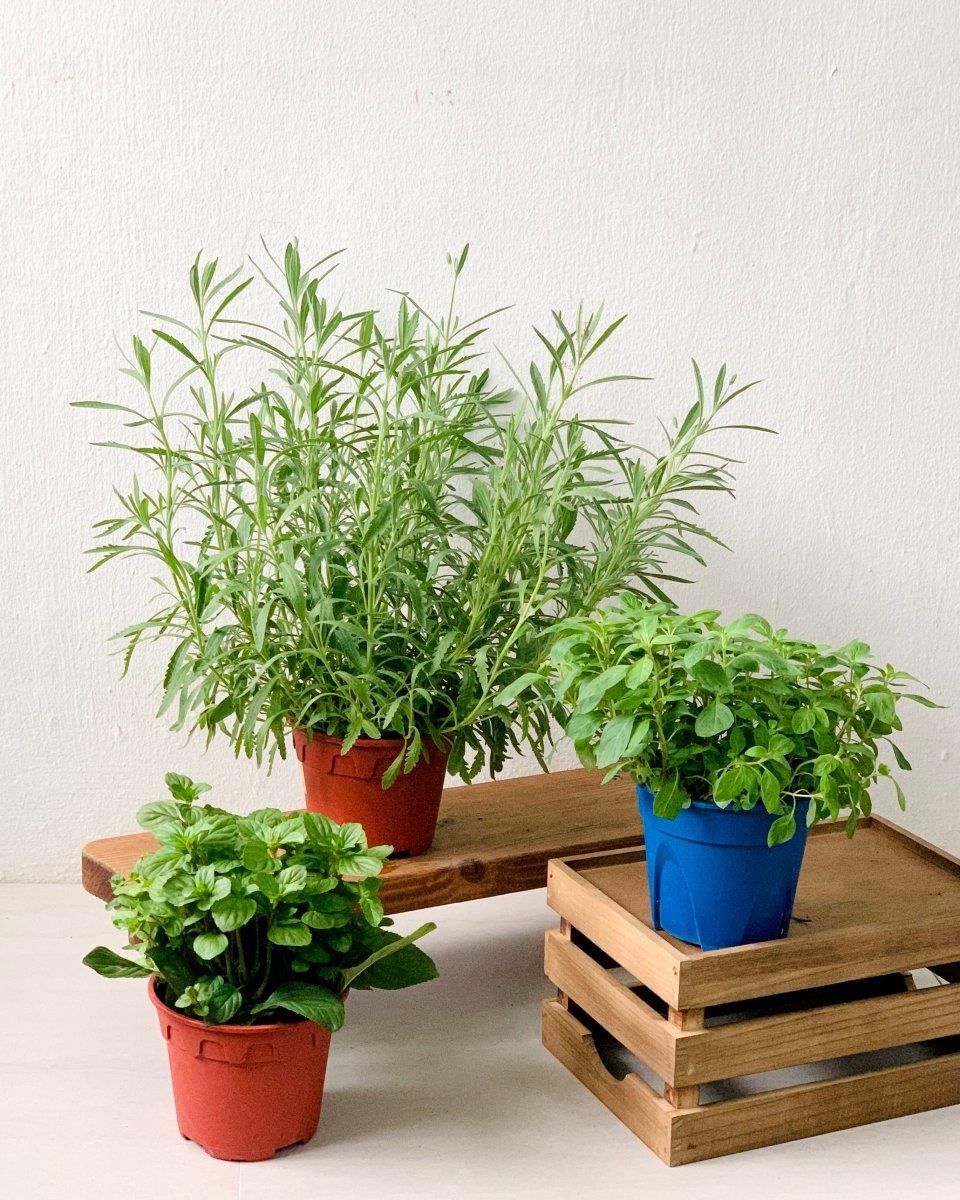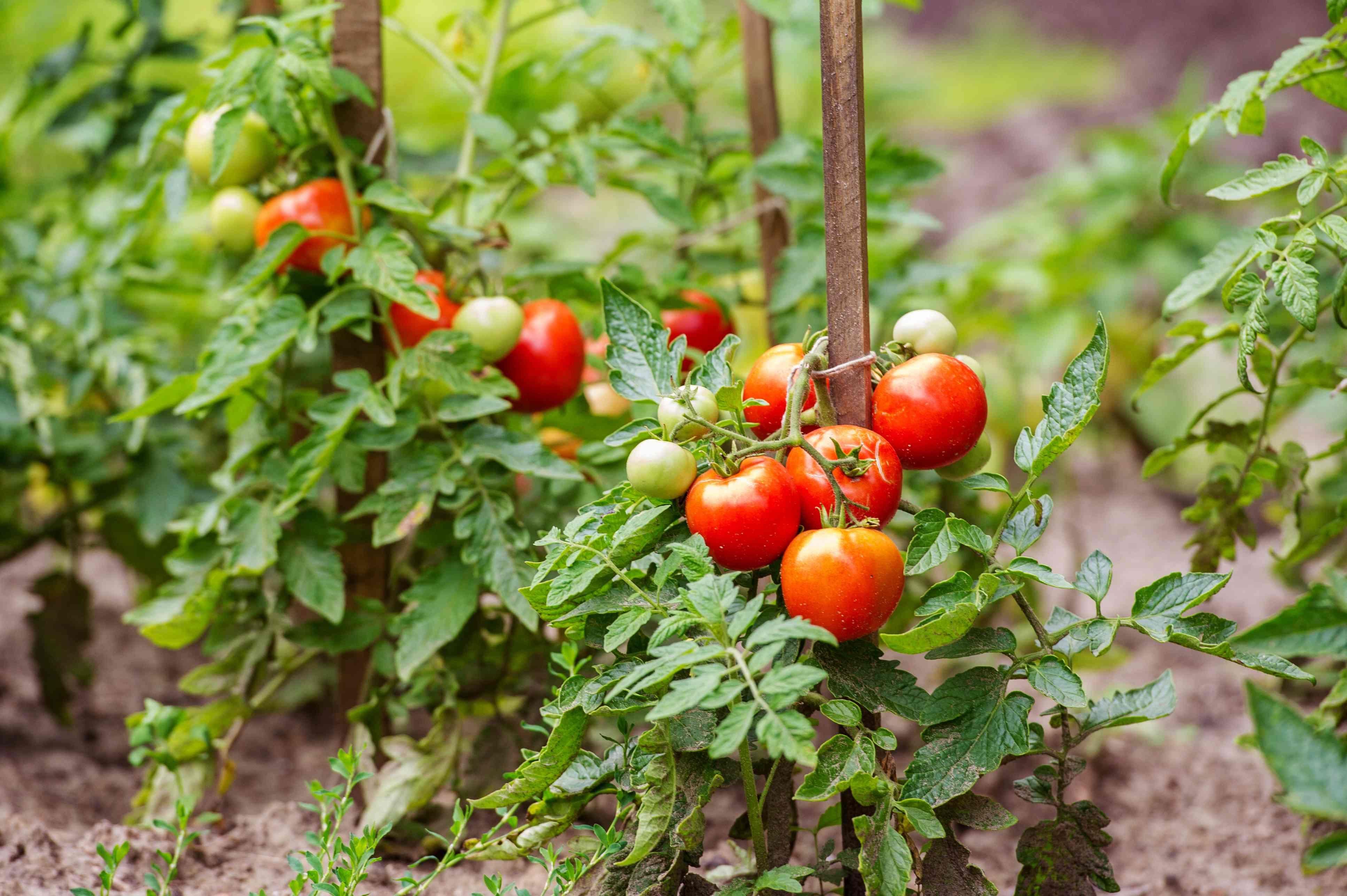Plants Chapter Notes | EVS for Class 2 PDF Download
| Table of contents |

|
| Introduction |

|
| Types of Plants |

|
| Plants That Give Us Food |

|
| Why Are Plants Important? |

|
Introduction
 Plants and Trees
Plants and TreesPlants are living things that grow in the soil.
- You can find plants everywhere: in gardens, parks, farms, and even on windowsills at home or school.
- Plants come in different sizes. Some are very tall, like big trees, and some are very small, like tiny herbs.
Types of Plants
1. Trees
- Trees are the tallest and strongest plants.

- They have a thick, hard stem called a trunk that holds the tree up straight.
- Trees have many branches and leaves.
- Trees are very important because they give us shade, fresh air, and fruits.
Different trees look different:
- The banyan tree has a big, thick trunk and strong roots that grow above the ground.
- The pine tree has a tall, thin trunk and cone-shaped leaves called needles.
2. Shrubs
 Shrubs
Shrubs- Shrubs are smaller than trees but bigger than herbs.
- They have hard stems but are not as tall as trees.
- Shrubs look like bushes and usually have many branches close to the ground.
- Examples of shrubs are the rose plant which has beautiful flowers, and the cotton plant which gives us cotton to make clothes.
3. Herbs
 Herbs
Herbs- Herbs are small plants with soft, green, and bendable stems.
- Their stems are easy to break if you try.
- Herbs usually live for a short time, like one season or one year.
- Examples include tomato plants that give us tomatoes, and coriander plants which we use to add flavor to our food.
4. Climbers
 Climbing Plants
Climbing Plants- Climbers are special plants that have weak stems.
- They cannot stand straight on their own.
- They climb on walls, trees, or fences by holding on with their tendrils or stems.
- Some climbers spread on the ground too.
- An example is the money plant which often climbs on walls or sticks.
Plants That Give Us Food
 Vegetables
VegetablesVegetables
- Many plants give us vegetables that we eat every day.
- Vegetables grow in different parts of plants like roots, stems, or leaves.
Examples:
Potatoes grow underground as roots.
Onions also grow underground.
Brinjals (eggplants) grow above the ground on plants.
Potatoes grow underground as roots.
Onions also grow underground.
Brinjals (eggplants) grow above the ground on plants.
Grains
 Grains
GrainsGrains are seeds from plants that we use to make our daily food like bread and rice.
Some common grains are:
Rice. grown in wet fields called paddies.
Wheat. used to make flour for roti, bread, and cakes.
Pulses (dal). small seeds like lentils and beans that are full of protein.
Rice. grown in wet fields called paddies.
Wheat. used to make flour for roti, bread, and cakes.
Pulses (dal). small seeds like lentils and beans that are full of protein.
Fruits
Fruits grow from flowers on plants or trees.

They are usually sweet and juicy and are good for our health.
Examples of fruits are:
Apples. grow on apple trees.
Bananas. grow on banana plants.
Watermelons. grow on vines on the ground.
Pineapples. grow from the center of a spiky plant.
Apples. grow on apple trees.
Bananas. grow on banana plants.
Watermelons. grow on vines on the ground.
Pineapples. grow from the center of a spiky plant.
Why Are Plants Important?
 Essential Plant Benefits
Essential Plant BenefitsPlants give us food to eat every day.
They give us fresh air to breathe by making oxygen.
Plants help keep the soil healthy and stop it from washing away.
Many animals live in plants or use them for food and shelter.
We also get medicines, clothes (like cotton), and wood from plants.
|
30 videos|243 docs|48 tests
|
FAQs on Plants Chapter Notes - EVS for Class 2
| 1. How do plants obtain nutrients? |  |
| 2. Why do plants need sunlight? |  |
| 3. How do plants reproduce? |  |
| 4. What is the importance of pollination for plants? |  |
| 5. How do plants adapt to their environment? |  |
















